
|
Lorna Mills and Sally McKay
Digital Media Tree this blog's archive OVVLvverk Lorna Mills: Artworks / Persona Volare / contact Sally McKay: GIFS / cv and contact |
View current page
...more recent posts
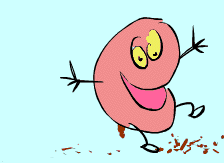
(found by L.M.)
Notes on Blogging
I really like the recent bubble of talk at simpleposie about AGYU's advocacy work. I'm in favour of the project, myself, and I also think the discussion around it is really valuable. It's not just good in the specific instance, but it's good in general, that any art issue, at any time, can now be taken up and debated in public.
I was really influenced in the 90s by an essay that Kevin Dowler wrote for YYZ book Theory Rules. Dowler talked about the very poor way in which art professionals tried to defend the National Gallery's exhibition of Vanitas by Jana Sterbak (better known as 'the meat dress'), and their acquisition of Barnet Newman's Voice of Fire by claiming that decisions on the value of art were best left to art experts.
Until recently, the uselessness of art, its pure negativity, ensured its freedom to function as critique, since it rested beyond (and therefore was incapable of infecting) the horizon of everyday life. However, with the erosion of the autonomy of aesthetic practices and the broadening of the scope of reception (once encouraged by the avant-garde), art can no longer hold the privileged position that was the sign of both its freedom from constraint and its lack of utility.In other words, the way I understood it, contemporary art's value in society was diminished by expert claims that the criteria for judging art were only inherent to the art world itself.
Kevin Dowler, "In Defence of the Realm: Public Controversy and the Apologetics of Art", in Theory Rules (Toronto: YYZ Books, 1996) p.82
One of the motivations for starting Lola magazine was to emphasise the vitality of contemporary art by demonstrating that it indeed had meaning and impact beyond the select realm of art experts. The project was not welcomed by everyone. I recently received an email from a Lola reader saying "...I bitched a lot about Lola way back ... because it seemed too lowbrow and scene-y..." Those were the days before blogs, when art discourse was pretty much restricted to print media. The dearth of arts coverage was bemoaned by people who naturally wanted reviews, but it also created a weird sense of security. Artists were public figures and art was a public experience, but you could pretty much guarantee that nobody would ever publicly challenge your work unless you were super famous.
With blogs, the public nature of all art practice is more healthy and functional. It still feels like early days. There is a sense of surprise on the part of the artist when all of a sudden their project is being heatedly discussed online. And it's not pleasant to be criticized, especially if you don't think the critic has put any rigorous thought into their comments. But unlike a Globe and Mail review by John Bentley Mays which the artist must passively receive as if a judgement from on high, these threads are discussions with multiple points of view, and the artist can join in and defend themselves. Not only that, but any and all art projects, including those that might never register on the radar of print media critics, could be up for discussion at any moment. The artist is denied the security and mystique of silence, but in return we get the understanding that art does matter deeply to lots of people. And that's better.
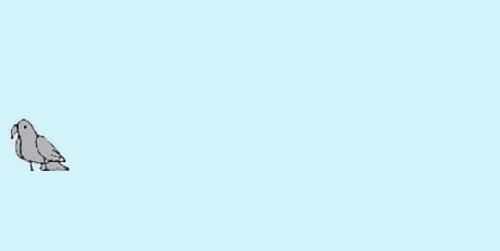
(found)





Do you have a nerdish interest in colour and $30 to spend on a made-in-California-new-media t-shirt? Joester is helping to promote the online conference 080808 and so are we.
As you may know, BCNM and Greg Niemeyer have been running the algorithmically timed 0n0n0n conference series since 01/01/01.
This time round we are stripping everything away from the conference except an online discussion...and the conference T-Shirt.
The conference theme for 080808 is Digital Color: Something from Something or Nothing. This refers to the standard digital format of 24-bit color. Each one of 24 bits (0 or 1) describes how computers should mix light to achieve a specific color. We will focus in on this process with our website, which allows you to change individual bits of the color format to see colors change. When you register (fee $30.00), you can reserve a bit, set the bit to either 0 or 1, and then explain your choice. You can also review other participant's explanations of their choices. This, we hope, will produce a conversation online about color, something and nothingness. It will also determine a palette of four colors which will define the custom-designed and custom sewn conference t-shirt (hence the fee). The conference t-shirt will be shipped to all participants after the conference closes.
Visit: http://studio.berkeley.edu/080808
It would be great to see your comments up there, and you will get a unique T-Shirt from the process.
The conference ends on Friday August 8 at 8 PM.
UPDATE: conference has been extended to 08/23/08
(the competition for who gets to control the shirt colour is heating up)
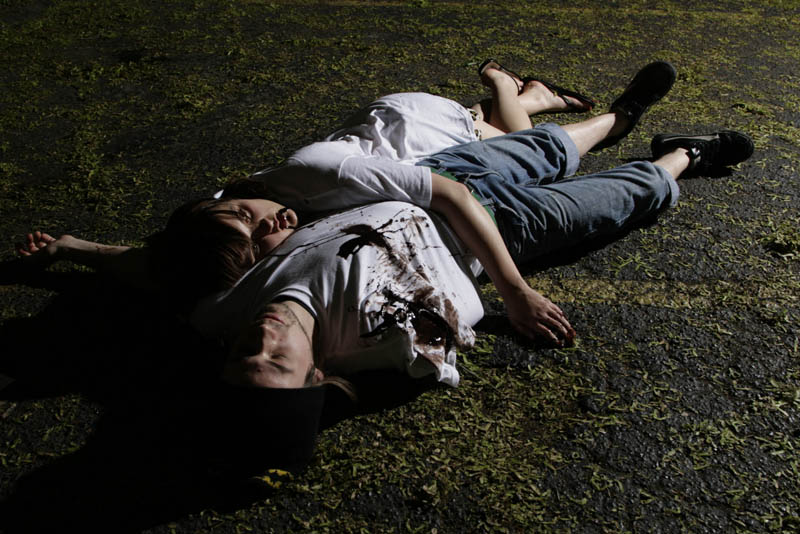
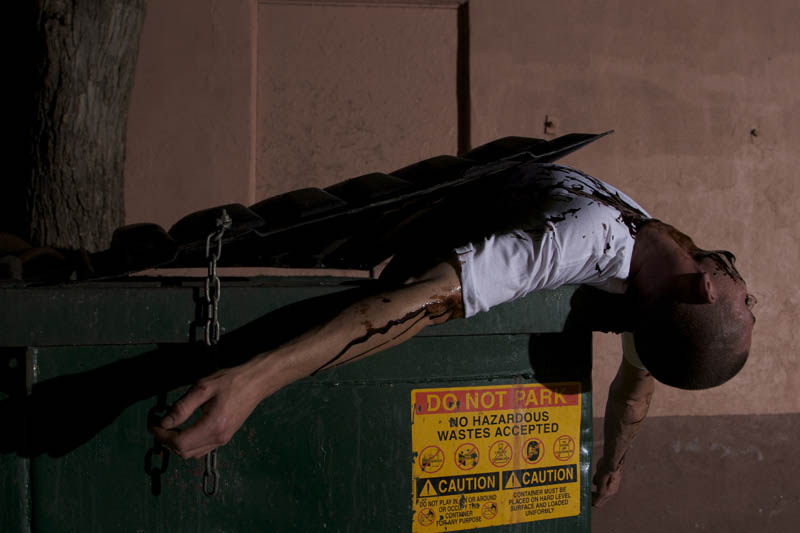
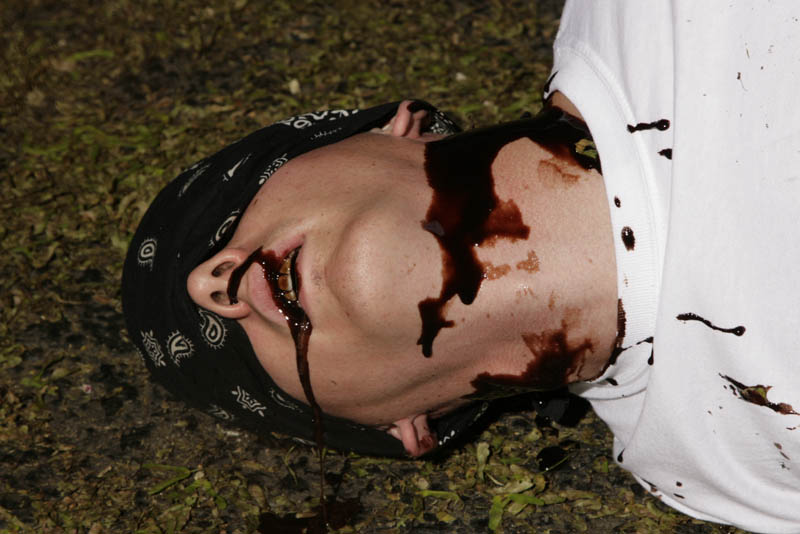
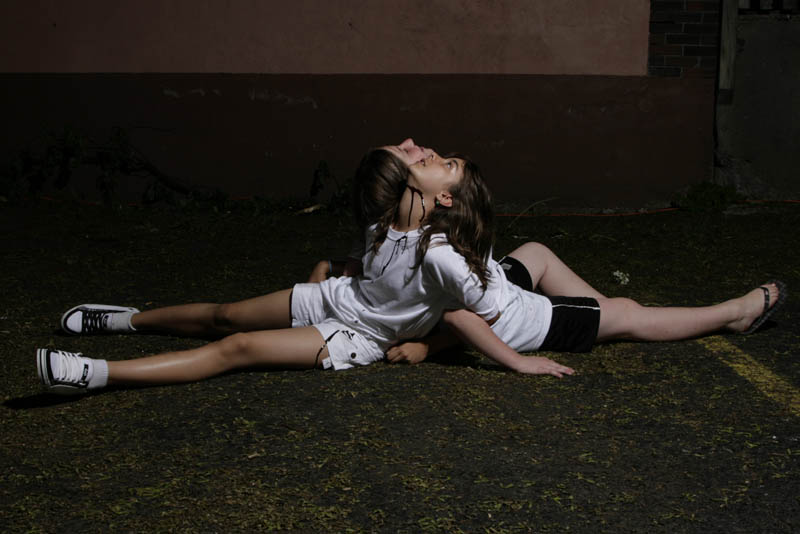
Photos by Andrew Wright from Death by Chocolate.
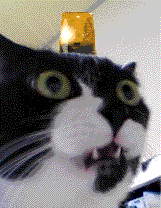
An animated discussion (Catch that pun? Did you? Did you?) at simpleposie on the AGYU's current survey of artists.
(I'm closing the comments here to avoid cross posting)
(This rule does not apply to me)
(opened again)
Selections from The 1930s: The Making of "The New Man"
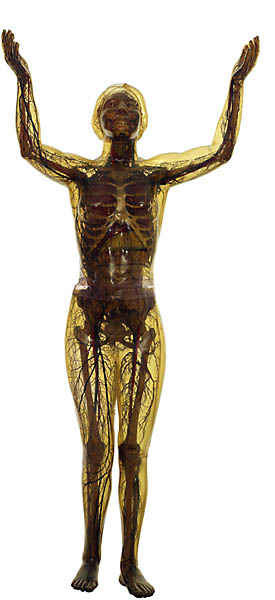
Gläserne Frau, 1935, from Deutsche Hygiene-Museum, Dresden.
Note: the exhibition The 1930s: The Making of "The New Man" did not
have this piece, but did have Replica of The Glass Man, 1995,
After original by Franz Tschakert, also from the
Deutsche Hygiene-Museum.
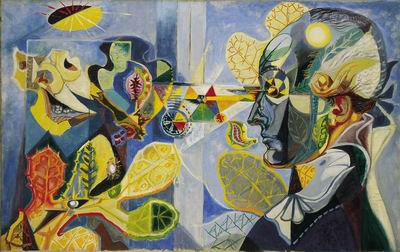
André Masson, Goethe and the Metamorphosis of Plants, 1940
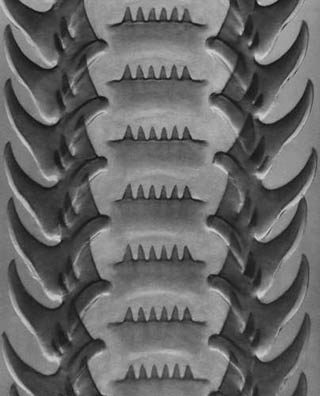
Carl Strüwe, Snail Tongue, 1928
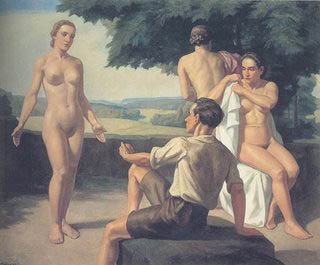
Ivo Saliger The Judgment of Paris, c. 1939

Salvador Dali Boiled Beans (Premonition of Civil War),1936
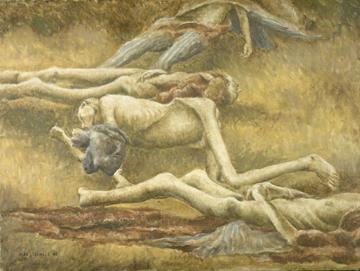
Alex Colville, Bodies in a Grave, Belsen, 1946
Me and GVB went to Ottawa to see The 1930s: The Making of "The New Man" at the National Gallery with our friend J. A major theme was artists' interest in biology, and the physiological workings of the world. The show opened with a replica of the very first "Visible Man", a life-sized sculpture by Franz Tschakert. I was also really taken with André Masson's painting of Goethe's brain/mind as he worked on his biological observations. As these nifty science inspired works gave way for massive eugenics-inspired paintings of Aryan uber-citizens, my own present day enthusiasm for art/science combinations started to irk me a little. But the exhibition was really comprehensive, lots of surrealism, and post war art as well. Alex Colville's painting Bodies in a Grave, Belsen kind of brought it home to me that the artists of that dense era were both engaged in the ethos of the time, and passing comment on it as well. Even the most politically embedded were bearing witness to facism and its horrors, and now, in the museum, we can get a pretty good look at that socio-political era with all the compromised ethical complexity that comes with a humane point of view. It's a great show, very well curated. GVB pointed out that no curators are named or credited anywhere in the exhibition, which is odd.
Because it seems related, I'm pulling and repeating a paragraph from L.M.'s recent comment, an excerpt from George Friedman writing about Solzhenitsyn...
Solzhenitsyn saw the basic problem that humanity faced as being rooted in the French Enlightenment and modern science. Both identify the world with nature, and nature with matter. If humans are part of nature, they themselves are material. If humans are material, then what is the realm of God and of spirit? And if there is no room for God and spirituality, then what keeps humans from sinking into bestiality? For Solzhenitsyn, Stalin was impossible without Lenin’s praise of materialism, and Lenin was impossible without the Enlightenment.